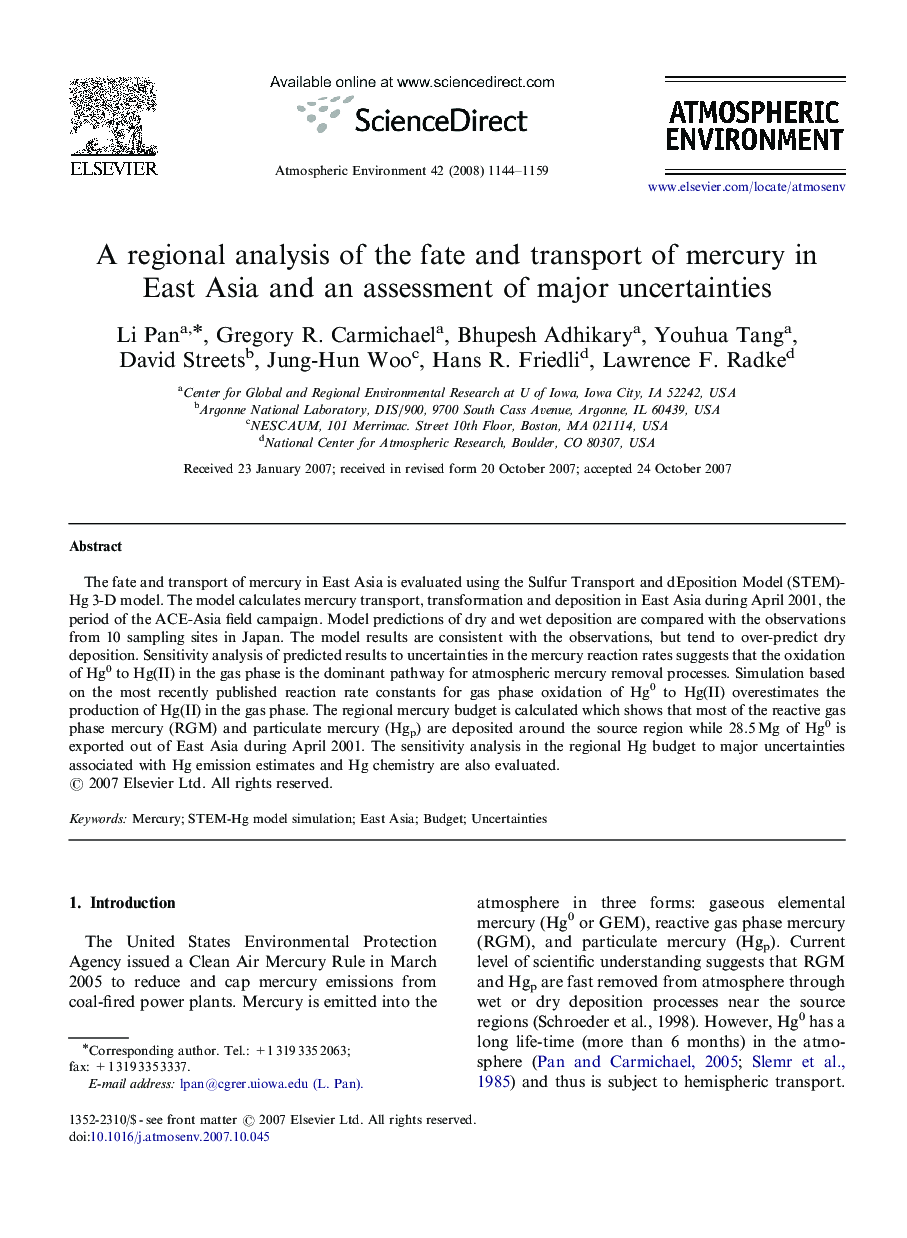| Article ID | Journal | Published Year | Pages | File Type |
|---|---|---|---|---|
| 4442784 | Atmospheric Environment | 2008 | 16 Pages |
The fate and transport of mercury in East Asia is evaluated using the Sulfur Transport and dEposition Model (STEM)-Hg 3-D model. The model calculates mercury transport, transformation and deposition in East Asia during April 2001, the period of the ACE-Asia field campaign. Model predictions of dry and wet deposition are compared with the observations from 10 sampling sites in Japan. The model results are consistent with the observations, but tend to over-predict dry deposition. Sensitivity analysis of predicted results to uncertainties in the mercury reaction rates suggests that the oxidation of Hg0 to Hg(II) in the gas phase is the dominant pathway for atmospheric mercury removal processes. Simulation based on the most recently published reaction rate constants for gas phase oxidation of Hg0 to Hg(II) overestimates the production of Hg(II) in the gas phase. The regional mercury budget is calculated which shows that most of the reactive gas phase mercury (RGM) and particulate mercury (Hgp) are deposited around the source region while 28.5 Mg of Hg0 is exported out of East Asia during April 2001. The sensitivity analysis in the regional Hg budget to major uncertainties associated with Hg emission estimates and Hg chemistry are also evaluated.
